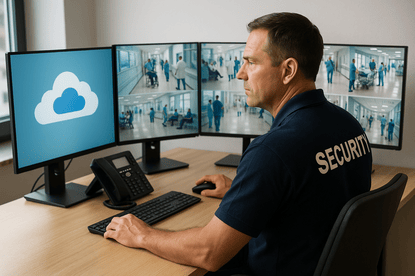
For decades, hospitals have relied on on-premise video systems to manage surveillance and safety. Servers in back rooms, hard drives filled with footage, and manual updates were the norm. But as healthcare facilities grow larger, more complex, and more connected, that traditional model is starting to show its limits.
Enter cloud video management — a smarter, more flexible approach that is transforming how hospitals store, access, and analyze video data. From better scalability to stronger security compliance, cloud-based systems are changing the future of healthcare surveillance.
k
k
Why Hospitals Are Moving to the Cloud
Healthcare security is no longer about simply recording what happens. It is about ensuring that security leaders have real-time visibility across multiple campuses, departments, and facilities. Traditional systems struggle to keep up with that scale.
With cloud video management, hospitals can:
-
View live and recorded footage from anywhere with authorized access
-
Manage multiple locations through a single dashboard
-
Scale easily as facilities expand
-
Eliminate the cost and complexity of maintaining on-site servers
In short, cloud systems make security more agile, connected, and efficient, giving hospitals the flexibility they need in a 24/7 environment.
k
k
The Compliance Advantage
Security footage in hospitals often contains sensitive patient data, which means it falls under HIPAA regulations. Managing that information properly is essential.
Cloud video management platforms are built with compliance and data security in mind. They typically include:
-
End-to-end encryption for data in transit and at rest
-
Access control features that ensure only authorized users can view footage
-
Detailed audit trails that log every access and action
-
Redundant cloud storage to prevent data loss
Because these systems are maintained and updated automatically, hospitals can stay current with the latest security patches and compliance standards without manual oversight.
k
k
Simplifying System Management
One of the biggest challenges for hospital IT and security teams is maintenance. On-premise systems require manual updates, software installations, and frequent troubleshooting. Cloud-based systems simplify all of that.
Administrators can manage user permissions, check system health, and access footage remotely without being tied to a specific location. Updates happen automatically in the background, reducing downtime and freeing up technical staff to focus on more critical needs.
For healthcare networks managing dozens of facilities, this centralized control is a major advantage.
k
k
Integrating With Modern Security Systems
Cloud video management does not operate in isolation. Many platforms are designed to integrate with:
-
Access control systems, allowing automatic video verification of badge events
-
Visitor management systems, providing a visual record of guest movement
-
AI-powered analytics, detecting unusual activity, motion, or crowding
By connecting these technologies, hospitals can create a unified security ecosystem that improves response times and strengthens situational awareness.
k
k
Addressing Common Concerns
Moving sensitive surveillance data to the cloud can make some hospital administrators uneasy. The key is to select a HIPAA-compliant video management provider with strong cybersecurity credentials.
Questions to ask include:
-
Does the provider encrypt all data and maintain redundant backups?
-
Where are servers hosted, and are they compliant with U.S. healthcare standards?
-
Can audit trails and reports be easily exported for compliance reviews?
With the right vendor, cloud systems are often more secure than on-premise setups because they are continuously monitored and updated by dedicated security teams.
k
k
Real-World Example
A regional healthcare network in the Midwest recently replaced its aging DVR-based surveillance system with a cloud video management platform. The result was immediate: faster access to footage, better visibility across all campuses, and automatic alerts for maintenance issues.
Security staff no longer had to physically retrieve video clips or wait for server syncs. They could pull data within seconds and share clips securely for investigations or compliance audits.
The transition also reduced IT maintenance hours by nearly 40 percent within the first year.
k
k
The Future of Video Management in Healthcare
The move to the cloud is not just a trend — it is a strategic shift. As hospitals continue to expand and adopt more intelligent systems, cloud-based video management will become a cornerstone of modern healthcare security.
It offers scalability, compliance, and resilience that traditional systems cannot match, helping hospitals protect what matters most: their patients, staff, and reputation.
Talk to SSP about implementing a cloud-based video management solution that enhances your hospital’s security, simplifies operations, and keeps you compliant with industry standards.


